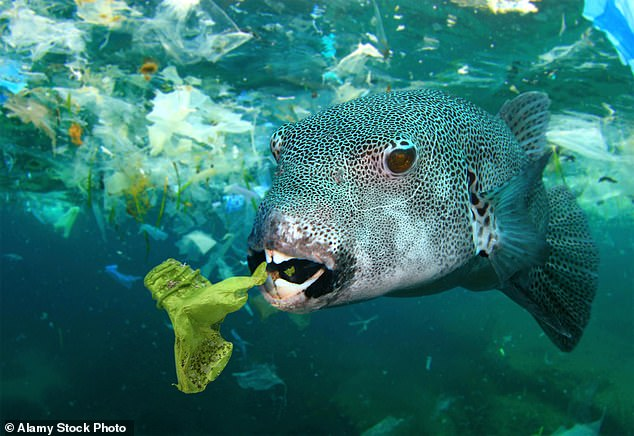The Great Pacific Garbage Patch, as dubbed by scientists, is a region of floating trash in the ocean that is twice the size of Texas. It comprises plastic debris that includes toys, cups, wrappers and bottles that slowly degrade from the sun’s rays and wave action into ever-smaller fragments until fish often mistake them for food. This finding, from a new study by the Scripps Institution of Oceanography, could have serious implications for the food chain, particularly as PFCs are so prevalent in plastics. Small fragment of plastic could leach toxins into the fish, stunt their growth, alter reproduction or even kill them. It is unclear what impact small, plastic-affected fish have upon larger fish that eat them, and ultimately on human fish-eaters.
Scientists examined 141 fish across 27 species and estimated that small fish were eating as much as 24,000 tons of plastic waste each year, mostly tidbits smaller than a fingernail, and that nearly one in 10 fish in the region had plastic in its stomach. Most fish in the study were lantern fish, which dwell at depths of 650 to 3,200 feet during the day, but then swim near the surface at night to feed on plankton, where they often gulp plastic by mistake.
Researcher Charles Moore, had of the environmental monitoring group the Algalita Marine Research Foundation, started measuring the weight of plastic in the water compared to that of plankton. He said, “We found six times more plastic than plankton, and this was just colossal.”
While sea vessels throw their plastics overboard (to the tune of 639,000 plastic containers every day), 80% of the garbage originates from land-based sources. The plastics in the patches consist of items such as water bottles, plastic bags, and fish netting. Moore found that the majority of the plastic in the world’s oceans consists of billions of pounds of raw plastic pellets called nurdles, a byproduct of other plastics manufacturing.







